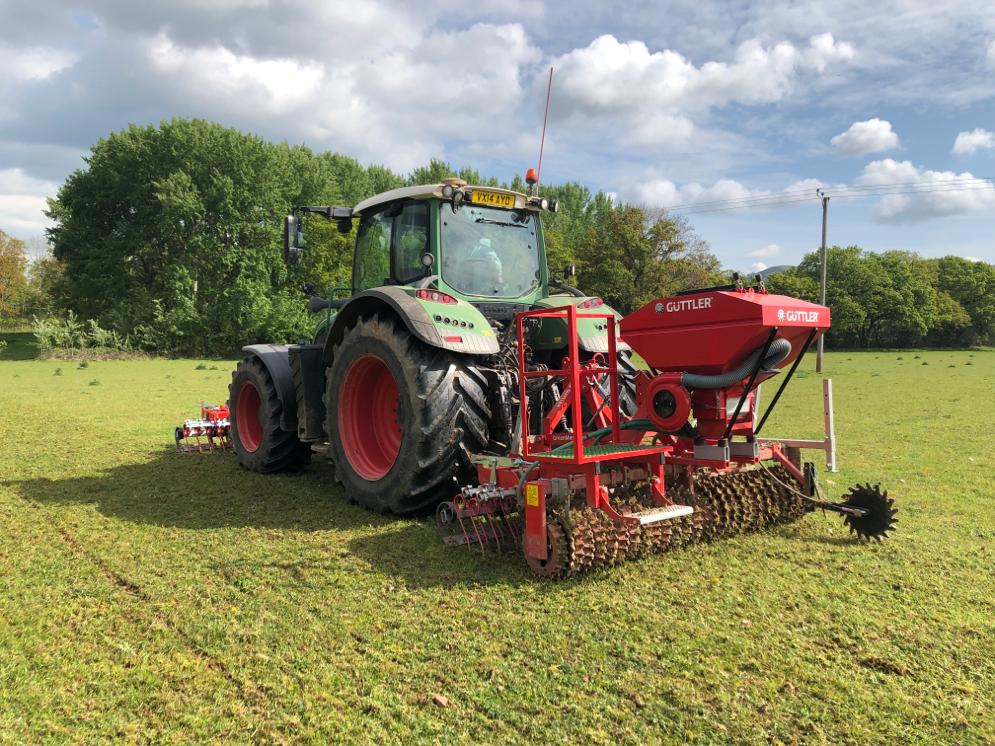Each type of farm will need to adapt operation management to suit the business and optimise resource efficiency.
Arable Farms

For example as outlined in the Crops section of the Toolkit, for arable farmers reducing the number of passes, depth and disturbance to the soil will lower the GHG emissions from fuel usage and soil organic matter loss.
Crop storage is also a major source of operational emissions for arable farmers. Arable farmers should make sure all controls are set to the right settings, as inappropriate settings can waste up to 25% of the energy used. Humidity is the key to crop storage and drying, having the right level could save up to 40% of your energy use due to drying. Cooling crops rather than drying them could save 10% in like for like comparisons of energy costs.
Dairy Farms
Specific actions include installing a plate cooler to reduce the use of electricity for tank cooling on dairy farms. The heat released from bulk tank cooling of the milk can also be reused to heat the hot water for washing round via a heat exchange unit. Both items are easily retrofitted to a parlour and most dairy farmers now have one or the other or even both.
Find out more in the Livestock and Dairy sections of the Toolkit.
Fuel and Vehicle Use
Across all farms, emissions directly from diesel and electricity use are straight forward to quantify accurately and usually make up a significant proportion of emissions, on a dairy farm accounting for around 10% or up to around 30% on an arable farm. Electricity use accounts for 36% of all energy used on-farms (Warwick HRI).
Make sure vehicles are regularly serviced and tyre pressures are correct – check the manual. Ensure appropriate vehicle loadings and remove unnecessary vehicle racks to reduce drag and save fuel. Drivers can also be sent on efficient driving courses which should translate into fuel savings.
There is also scope for imaginative change, for example if you run a veg box delivery scheme, could you switch to a hybrid or electric van? This will dramatically reduce transport emissions. If you are interested, why not read the blog from FCCT Director Andrew Rigg on his electric car journey?
Any savings and efficiencies that can be made here will automatically benefit the bottom line, and if cost effective should be implemented as a priority.
Minimum Tillage and Precision Drilling
Carbon is released from soil when it is disturbed. Reducing the frequency and intensity of cultivations results in less Soil Organic Matter (SOM) being oxidised and also improves soil structure.
Research shows a strong correlation between increasing soil organic matter and higher yields.
How can this be achieved? By adopting ‘minimum tillage’ and / or precision drilling operations, it is possible to reduce the disturbance of on-farm soils and build up soil organic matter.
These systems use GPS tracking and guidance to reduce soil disturbance and only use the same lanes for driving across fields (‘Controlled Traffic Farming’). This has the added financial benefit of lower fuel costs.
Soil and yield mapping techniques allow greater precision in fertiliser applications and other inputs needed to be applied across an area, saving costs, by showing exactly which areas are in need to greater applications and which less.
Precision drilling ensures applications are applied in uniform amounts to uniform depths and only to the areas requiring them.
Read the Hendred Farm FCCT case study for practical examples of minimum tillage and precision drilling in the field.
For more information on tillage and carbon emissions, why not read the field operations page in the arable section of the Toolkit?

